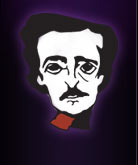MWA #1: After the Idea
And, I’m still in Los Angeles, so my computer time is limited. I’ll try to respond to comments when I can.
 On Saturday, I attended the Mystery Writers of America University—and all-day session devoted to classes and talks on the craft of writing. Although MWA sponsors the event, with thanks to the Rocky Mountain chapter of MWA for hosting and organizing it, most of the material presented pertained to writing fiction regardless of genre. It was one of those brain-overload days, and I’ll be spending some time over the next couple of weeks recapping what our speakers said.
On Saturday, I attended the Mystery Writers of America University—and all-day session devoted to classes and talks on the craft of writing. Although MWA sponsors the event, with thanks to the Rocky Mountain chapter of MWA for hosting and organizing it, most of the material presented pertained to writing fiction regardless of genre. It was one of those brain-overload days, and I’ll be spending some time over the next couple of weeks recapping what our speakers said.
Another blanket statement: all speakers pointed out (as I have) that these tips work for them, but there is no ‘right’ or ‘wrong’. These are simply tools for your writing arsenal.
The first speaker was author and professor of English and sociology, Jess Loury. Her topic: After the Idea: a Pyramid Approach to Novel Writing.
She described a 7 step process for writing a book. They are:
1. A one-sentence summary of what the book is about. This is NOT the plot, not the story. It’s the kernel idea. This step is essential (although not necessarily perfected at this time) because it’s going to end up being your hook to agents and editors.
2. Expand that one sentence into a full paragraph. This paragraph should include the status quo at the beginning of the book, what obstacles the protagonist encounters, and the end. This is for you, so don’t fear you’re ‘giving away the ending.’ No secrets. She suggested using techniques like Mind Mapping to help you figure out more of the story conflicts.
3. Create a character bible. She suggests limiting this to one page per character, or you might end up getting carried away and getting into scrapbooking instead of summarizing. One exercise she gave us was a new (for me) way to think about the characters. She told us to use our antagonist for this one, but it would be the same for any character. Answer the three following questions:
1. What’s your character’s name?
2. What’s a basic physical description?
3. What would you find in his fridge or his garbage?
She also mentions finding pictures if that helps you visualize your character, knowing his age, personality traits and their sources, quirks, goals, motivations and conficts (we who write romance know all about this one) and growth. How will this character be different at the end of the book.
4. Sketch your setting. This one moved to the top of my ‘to do’ list. If you’re writing a series, it helps to know the layout of your town, your characters’ homes, workplaces, etc. This can keep you from having to go back through all the previous books to find out if you ever named the street your character lives on, or if two building are next to each other in one book, but across town in another.
5. Go back to step 2, and develop each sentence in your paragraph into a full page description. Be sure to involve ALL the senses. This is where you might find out what research you’ll need to do, or where you’ll work in things you’ve already researched.
6. Do a rough outline of the novel. For the pantsers in the audience, she mentioned Stephen King, who said : “… outlining – or “developing the plot,” as he calls it – is “the good writer’s last resort and the dullard’s first choice. The story which results from it is apt to feel artificial and labored.” So, instead of a detailed, scene-by-scene outline, she emphasized the rough. Highlight the major conflicts, know what happens day by day, and how it affects the characters. The inciting incident will affect different characters differently, and will create a ripple effect throughout the book.
7. Write the book.
As a pure pantser, I don’t like to think about outlining a book, but there are still a lot of great things to try, even if you don’t do them all before you start writing. I confess I’m 3/4 of the way through my book and I still haven’t decided on a name for my antagonist/villain.
Tomorrow is another field trip. More on the MWA University on Monday.




